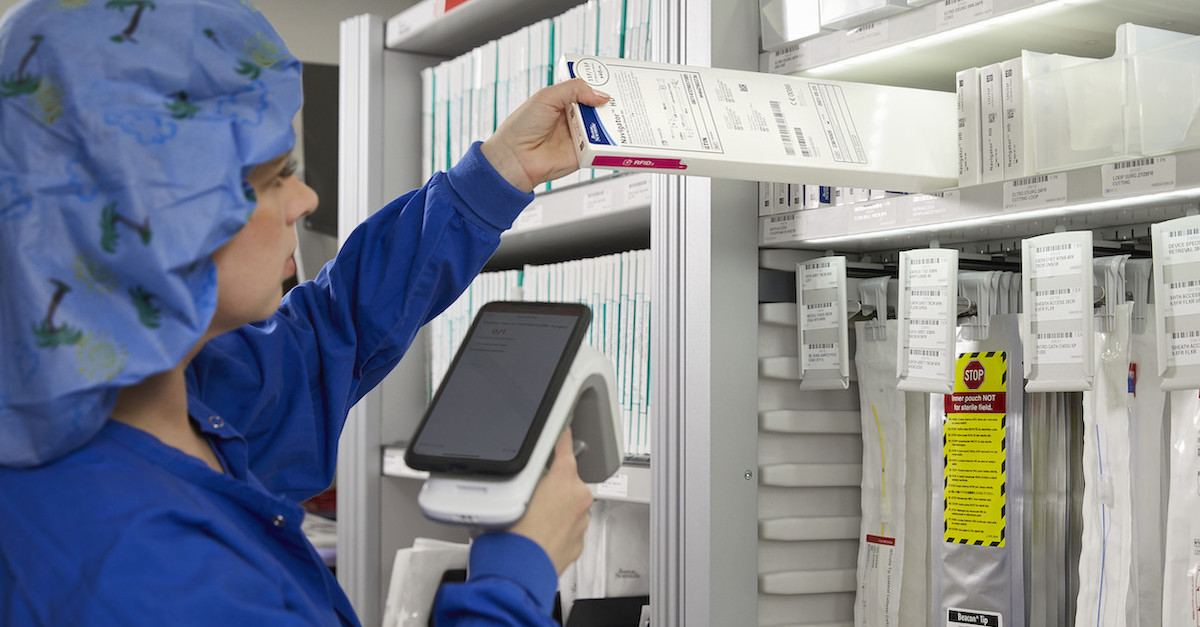Cardinal Health MarketSM
The legacy Cardinal.com Medical Ordering site has been replaced with Cardinal Health MarketSM, a new product experience designed with you in mind.

01/14/2022
The incredible daily pressures facing the health care industry – from surges in patient volume to near-constant pandemic-related supply chain disruption to health care workers with serious burnout – need innovative solutions that harness the power of technology. Innovations can give visibility into the supply chain, create efficiencies and eliminate some manual tasks, and save health care providers’ time.
“We must forge a new path forward – quickly,” said Shawn McBride, vice president and general manager of Cardinal Health’s WaveMark™ business, a key technology solution within the health care supply chain that optimizes supply and inventory management. “Established processes simply aren’t sufficient to withstand the global challenges and constraints we’re facing today.”
McBride provides several examples of how Cardinal Health is pushing innovations forward.
1. Accelerating digital transformation. “We are working together across the care continuum to accelerate healthcare’s digital transformation,” McBride said.
WaveMark™, a growth engine at Cardinal Health, supports health care’s digital transformation. It is creating solutions that build the supply chain of the future using two key factors: digital automation and clinical integration.
Cardinal Health’s OptiFreight® Logistics team also plays a key role in building the supply chain of the future – it uses digital automation technology to manage health care logistics, providing visibility into shipments moving from point A to point B.
What’s more, we have invested in Medically Home, a medical technology company whose innovations are allowing patients to receive hospital level care in their own homes. Technology provides the coordination and orchestration of virtual hospital care, which means that patients, including those with challenging medical conditions and significant, unpredictable needs, will have access to high-quality, high-acuity care at home. This benefits hospitals, too: They’ll be able to move patients with mid-level chronic conditions to the home and focus resources on patients with higher care needs.
2. Providing automation to help ease the labor shortage. Health care systems are beleaguered by staffing shortages. As Fierce Healthcare reports, demand is rising for health care employees and is expected to continue to do so for several years. At the same time, more and more health care workers are leaving the workforce, in part due to burnout.
“Supply is simply not meeting demand,” McBride said. “However, automated technology can help ease the burden of these shortages by eliminating manual tasks, which in turn enables the workforce to do what they were trained to do: take care of their patients.”
For example, many hospitals and clinical labs are still manually tracking inventory – a process that can be fully automated with WaveMark™. Its technology alerts staff on when and what to order, based on historical usage data. “This saves a lot of time,” McBride said. “It means that frontline workers and lab staff spend less time in storage closets looking for products they need for surgeries or tracking down critical diagnostics tests, and more time with patients.”
3. Centralizing data. “The digital transformation can only be successful if the industry builds a strong data infrastructure,” McBride said. “Within all our health care innovations, we need clean, reliable data.”
WaveMark™ is already creating and accelerating a digital supply chain that uses a trusted platform to share data across the point of manufacturing to the point of care. “We’re investing in a centralized, system-wide management process and a clinically integrated strategy supported by data and analytics provides access to insights previously unavailable to providers and manufacturers. It’s critical to our success.”
Another example is incorporating the use of a consistent, globally adopted standard, such as GS1, to trace products throughout their supply chain journey. GS1 is an agency that issues unique device indication (UDI), so that manufacturers who supply regulated medical devices have a global framework to identify, capture and share product information.
4. Embracing disruption. Technology disruptions are happening all they time – and they continue to change health care for the better, McBride said.
He noted Amazon’s recent release of a new concept for automated technology that will allow Whole Foods shoppers to skip the checkout line. “I imagine that same sort of technology could be used in a health care setting,” McBride said. “Staff could quickly walk into a product storage area, grab what they need and go. Meanwhile, on the back end, the inventory would be tracked and maintained using one centralized system. This is exactly the type of disruption we’re embracing and driving at Cardinal Health.”
As we help health systems and hospitals manage current challenges, we’re also preparing for future disruptions, McBride notes. “We know we may not be able to predict the next health care crisis. But, with a keen focus on innovations, we are better prepared than ever before – and better able to ensure that our customers can continue to provide the very best care for their patients.”
Editor’s note: You can read more about what Cardinal Health is doing to build greater supply chain resiliency here. Also please read CEO Mike Kaufmann’s note urging collaborative action across the public and private sectors to address disruptions in the healthcare supply chain.